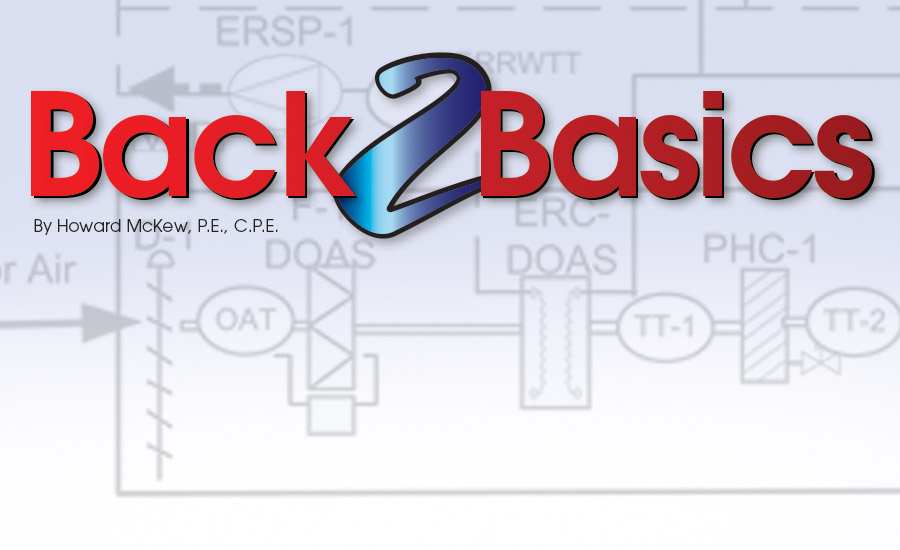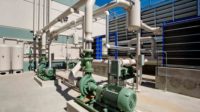Project Delivery Method: Design-build (D-B)
Owner Team: The casino complex company, owner representative (consultant), project manager of capital projects, facility manager (outsource staff), energy manager, third-party commissioning consultant (CxC); and third-party testing, adjusting, and balancing (TAB) technician.
Project Delivery Team: D-B project manager and utility company representative.
HVAC Project Team: HVAC D-B engineer, automatic temperature control (ATC) D-B technician, building automation system (BAS) technician (outsource staff), and an energy engineering consultant (EEC).
Application: ASHRAE HVAC Application Handbook: “Energy Use and Management,” Chapter 37; “Owning and Operating Costs,” Chapter 38; “Building Energy Monitoring,” Chapter 42; and “Supervisory Control Strategies and Optimization,” Chapter 43.
Project Type: Infrastructure (primary-secondary chilled water system), energy audit, and retrofit.
References: 2019 ASHRAE Handbook – HVAC Applications, 2020 ASHRAE Handbook – HVAC Systems and Equipment, and the codes and standards section at the back of each ASHRAE Handbook.
Other References: ASHRAE procedures for commercial building energy audits, ASHRAE fundamentals of design and control of central chilled water plants, ASHRAE standard for commercial building energy audits, ASHRAE Standard 202 (commissioning process for buildings and systems), Design-Build Institute of America (DBIA), and the International District Energy Association (IDEA).
DESIGN INTENT DOCUMENT (DID)
- The HVAC system selection and design intent are based on the process outlined in ASHRAE Handbook 2020, Chapter 1, “HVAC System Analysis and Selection.” It includes the building owner’s program as well as additional goals and system/constructability constraints. A reference is also made to the ASHRAE Handbook 2020, Chapter 3, “Central Cooling and Heating Plants.”
- A complete energy audit of the primary-secondary chilled water system from the central chiller plant to the individual buildings that make up the casino’s 12-building complex.
- Automatic controls shall include new chilled water system flow monitoring and Btuh energy metering at the central plant and at each individual building.
- An interface of new and existing temperature transmitters, pressure differential transmitters, gallons per minute (gpm) flow metering transmitters, pump controls, and BACnet and internet interfaces with a new BAS.
- For program and project goals, refer to Functional Goals in Chapter 1 of the 2020 ASHRAE Handbook. Budget goals are energy consumption reduction and life cycle cost.
- Management goals include property management, outsourced mechanical and electrical services, and management/maintenance of the mechanical and electrical operations.
- Available utilities include electrical power, central plant chilled water, individual building new chilled water meters, and a BAS.
- Existing conditions include four water-cooled, variable-speed compressor chillers; one waste heat absorption chiller; six draw-through cooling towers; and two plate and frame waterside economizer heat exchangers. Existing pumps are a combination of split-case horizontal- and vertical-based mounted units with variable frequency drives (VFDs).
DESIGN CRITERIA DOCUMENT
- The HVAC design criteria shall be in sync with the project delivery method and the aforementioned owner’s project requirements.
- The design criteria shall be based on an energy audit of the central chilled water system distribution followed by an energy conservation analytical analysis of existing air conditioning performance, associated operation, and proactive maintenance management.
- Based on the energy conservation proposed retrofit project, a life cycle analysis shall compare the addition of chilled water flow meters, and Btuh energy metering results for design-build cost to return on investment based on the HVAC design criteria.
- The addition of a new BAS computer system with remote monitoring and management shall be overlaid to the existing cooling system to reduce operating cost and enhance operation and maintenance of this primary-secondary system.
- The existing utilities shall include electrical power and central chilled water distribution with flow meters and Btuh energy metering as the cooling media leaves and returns from the central plant. This energy retrofit project shall follow ASHRAE Guideline 22, “Instrumentation for Monitoring Central Chilled Water Plant Efficiency.”
- A similar approach of monitoring individual building secondary systems shall mirror Guideline 22.
- The D-B HVAC design engineer shall provide system flow diagrams with associated automatic energy management control and sequence of operation.
- The D-B project manager shall include estimates for all costs associated with the design, build, and warranty of the project.
To see this month’s B2B quiz, click here.
To see the answers to this month’s B2B quiz, click here.





